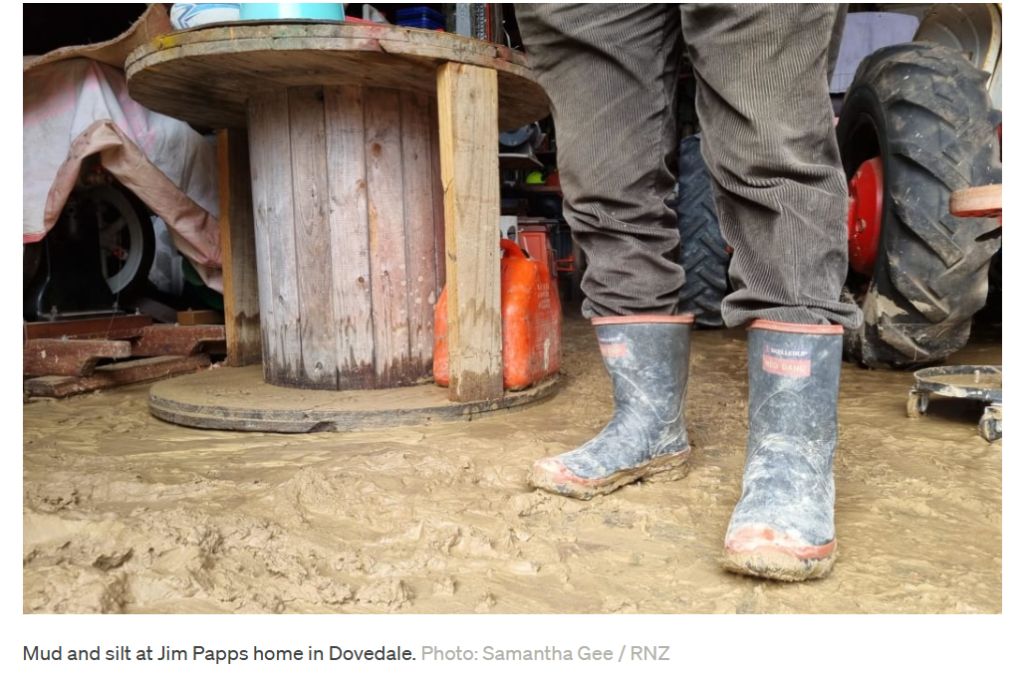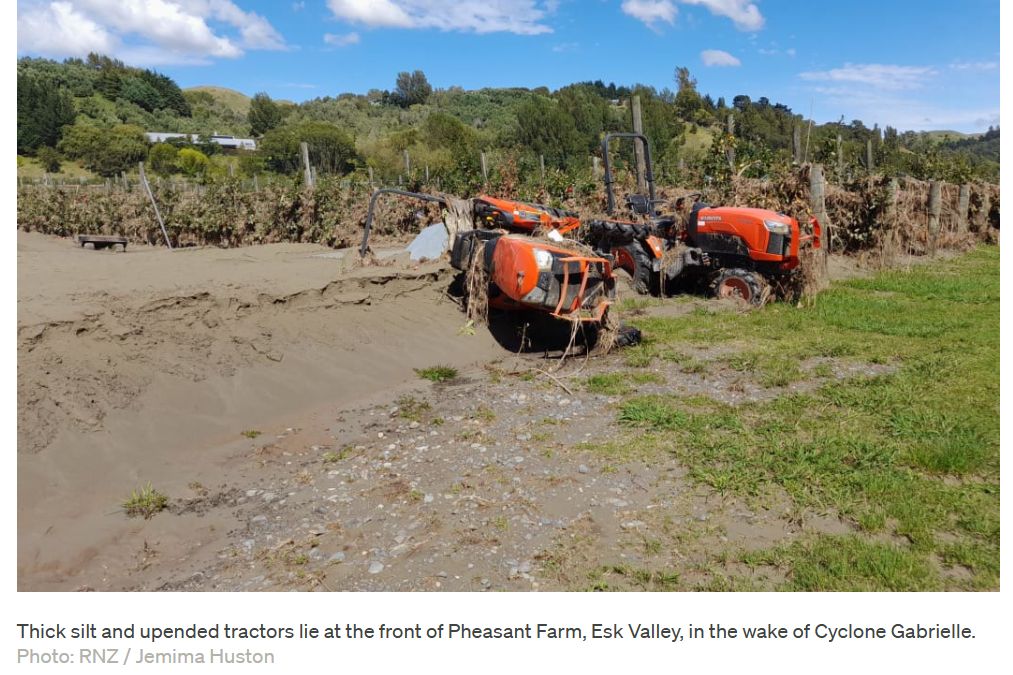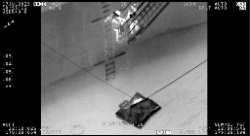Monique Steele, Journalist

The head of the $228 million silt removal programme after Cyclone Gabrielle in Hawke's Bay is drawing "eerie" similarities with Nelson Tasman region, as the flood-hit areas look ahead to their own recovery.
Communities across the top of the South Island were facing millions of dollars worth of damage to roading infrastructure, farmland and properties, following the two recent floods that struck the area within a two week period, from late June.
Riverside properties in Tasman were grappling with woody debris, silt and waste strewn across their properties.
Cyclone Gabrielle smashed Aotearoa in February 2023 with a force of heavy rain which caused flooding damaging infrastructure, properties and land on the North Island's East Coast.

Twelve people died during the natural disaster.
Large amounts of silt, forestry slash and waste were swept across the whenua, prompting councils across Hawke's Bay to set up an immediate regional taskforce to deal with the material.
Taskforce lead Darren de Klerk said watching the news, there were similar scenes in Tasman as there were in Hawke's Bay and Tairāwhiti following the cyclone.
"It's quite an eerie similarity, I think when you look at some of the woody debris and some of the silt and mixed product that we had to deal with," he said.
"Obviously, productive land is another similarity in the fact that a lot of the highly productive horticulture and viticulture land has been infected."
De Klerk said after an emergency, the early stages of recovery were usually shrouded in uncertainty.
"In the early days, anyone dealing with this will find it quite overwhelming," he said.
"Firstly, it's just understanding the level of involvement that either Civil Defence or the council has in this recovery."
De Klerk said it broke Hawke's Bay up into six zones, triaged properties by severity, and then mapped out sorting and disposal sites, in efforts to "chomp the elephant" one bit at a time.
Since its beginning, the team moved more than 2.5 million cubic metres of silt across more than 1100 properties, returning around 7000 hectares of land to productivity.
It cleared one million cubic metres of woody debris across the coastline and rivers, and sorted through 12,500 broken orchard and vineyard posts.
He said in Hawke's Bay, councils had to "take a leap" to support their communities, before the first round of government funding was announced several months after the event, in May 2023.
"Essentially, you don't have a rule book," he said.
"From a community point of view, I can guarantee you the people behind the scenes are working as absolutely as hard as they possibly can to find solutions."
He said it was working with Tasman officials to share insights and avoid "re-inventing the wheel".
"One of the biggest probably learning is just how you manage your contractor army," de Klerk said.
"Having a standby list of contractors available, so you're not having to work through the procurement and contracting of suppliers in the heat of the recovery phase.
"My thoughts are with them and they'll be trying their absolute best."
De Klerk said the work must be methodical, and open communication with locals was vital.
He was now working for the Hastings District Council on its ongoing water and roading infrastructure cyclone recovery.



 Gordon Campbell: On The Costs Of Regulating Cost, And Burkina Faso As A Role Model
Gordon Campbell: On The Costs Of Regulating Cost, And Burkina Faso As A Role Model Dog Lovers of Monte Cecilia: Locals Challenge Puketāpapa Local Board And Auckland Council’s On-Leash Policy Change For Monte Cecilia Park
Dog Lovers of Monte Cecilia: Locals Challenge Puketāpapa Local Board And Auckland Council’s On-Leash Policy Change For Monte Cecilia Park Maritime New Zealand: Three Rescued In High-Seas Operation After Vessel Abandoned North Of New Zealand
Maritime New Zealand: Three Rescued In High-Seas Operation After Vessel Abandoned North Of New Zealand Health Coalition Aotearoa: Experts Urge Fix As Government Expands Failing Lunch Scheme To Primary Schools
Health Coalition Aotearoa: Experts Urge Fix As Government Expands Failing Lunch Scheme To Primary Schools Helen Clark Foundation: The Helen Clark Foundation Launches Honorary Fellow Programme
Helen Clark Foundation: The Helen Clark Foundation Launches Honorary Fellow Programme Department of Conservation: Call For Public Information On Auckland Marine Mammal Cases
Department of Conservation: Call For Public Information On Auckland Marine Mammal Cases New Zealand Jewish Council: NZ Jewish Council Clarifies Position - Advocating For Safety And Accountability, Not Censorship
New Zealand Jewish Council: NZ Jewish Council Clarifies Position - Advocating For Safety And Accountability, Not Censorship

